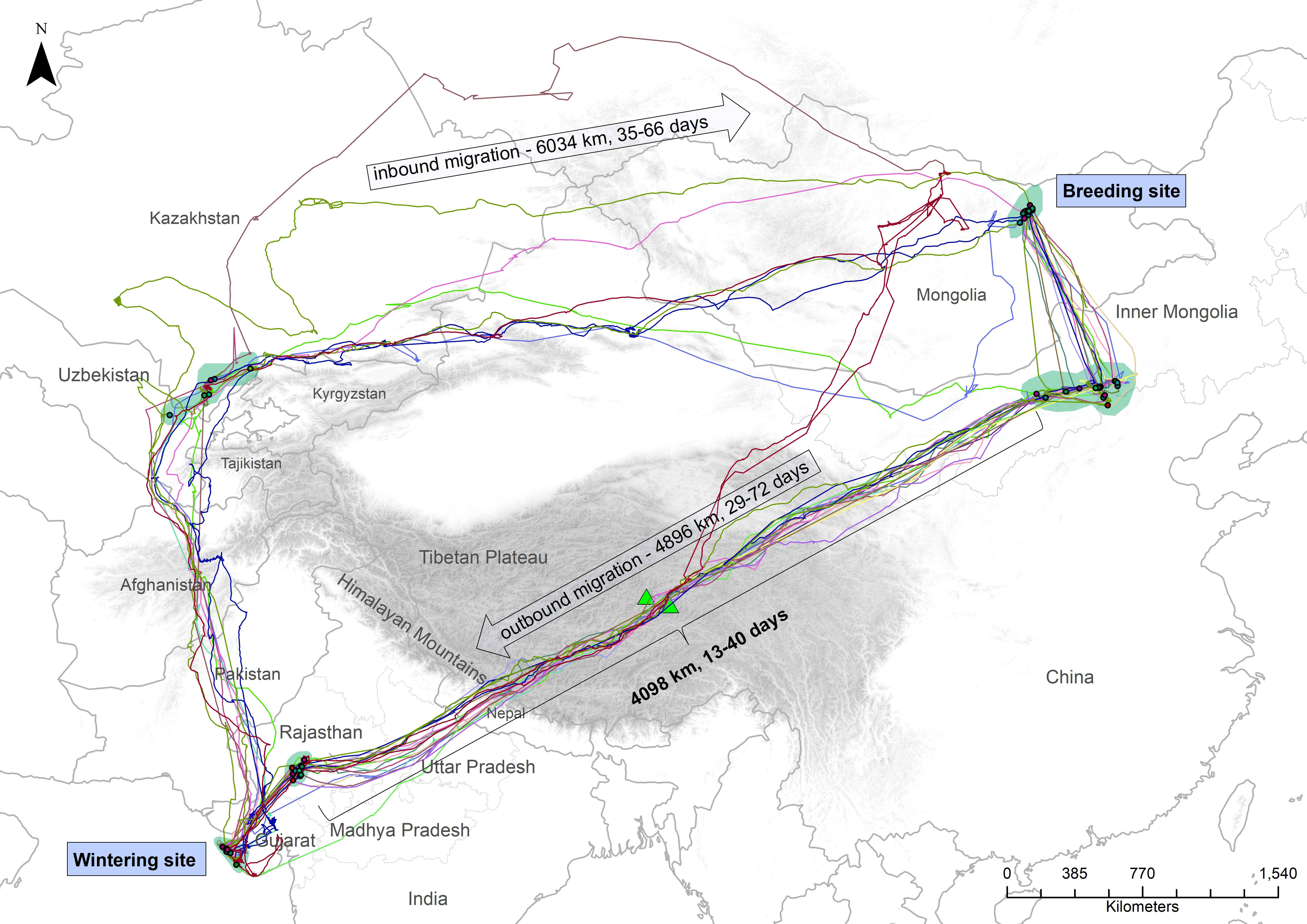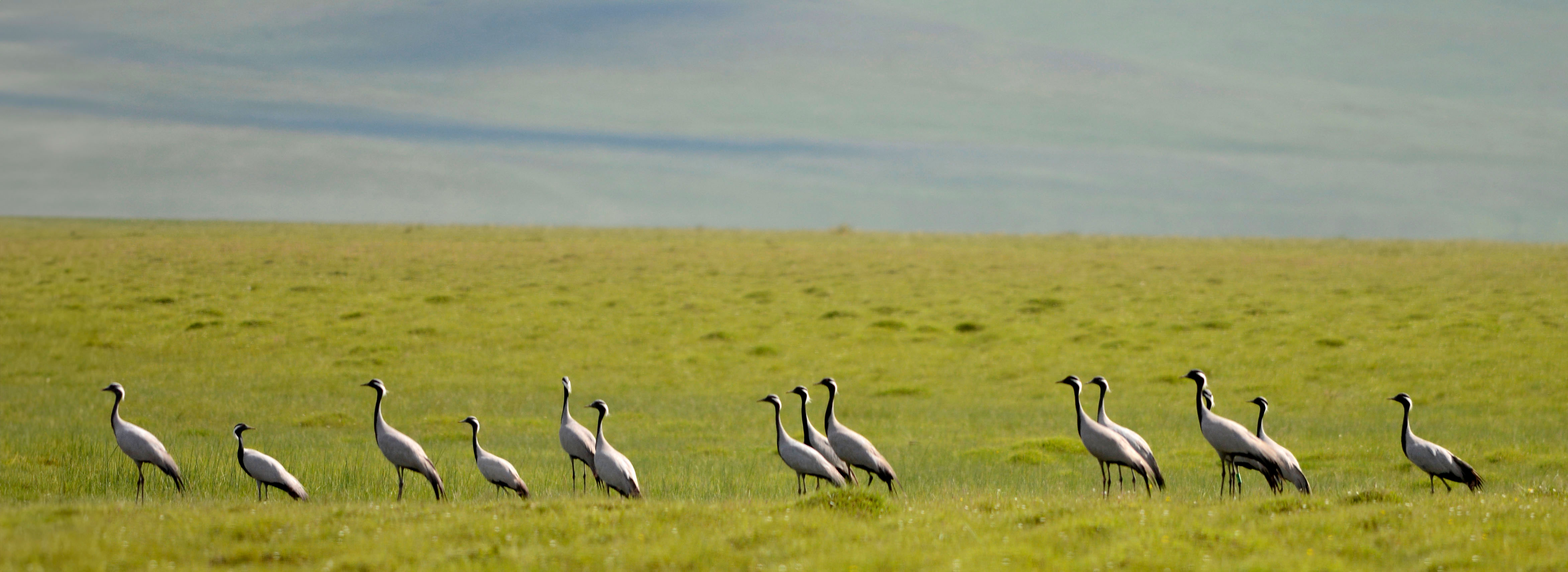Why Demoiselle cranes migrate in a loop?
Although some migratory birds may take different routes during their outbound and inbound migration, the factors causing these differential migrations to and from the breeding grounds, have rarely been investigated. In Northeast Asia, Demoiselle crane performs one of the most extreme “loop” migrations known to date. During outbound migration, they cross the Himalayas to non-breeding sites in northwest India. Contrastingly, during inbound migration to the breeding grounds, they fly around the western end of the Himalayas. But why do they do that?
 Migration paths of 16 Demoiselle cranes tracked from Khurkh Khuiten river valleys in Mongolia.
Migration paths of 16 Demoiselle cranes tracked from Khurkh Khuiten river valleys in Mongolia.
We tracked 16 individuals Demoiselle crane with satellite transmitter from their Mongolian breeding ground. Based on the tracking dataset, we compared conditions during actual migration with those of simulated “reverse” migration (i.e. by adding 180 degrees to the flight direction and adding and subtracting half a year to the timestamps of outbound and inbound migration, respectively).
The comparison of actual and simulated “reverse” migration indicated that cranes would have encountered poorer aloft (wind support and thermal uplift) and on-ground conditions (temperature) if they had migrated in a reverse outbound migration and poorer on-ground conditions (Normalised Difference Vegetation Indexes, NDVI) if they had migrated in a reverse inbound direction.
